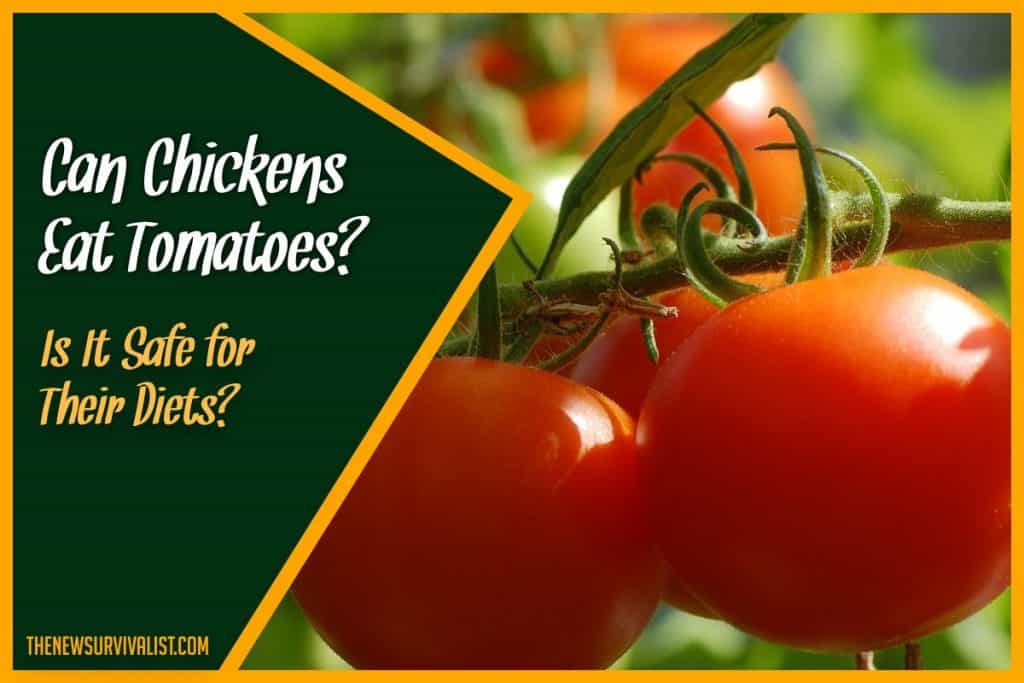Tomatoes fall under the coveted title of superfruit in the market. They make for easy plants to grow in your garden as well, fitting in salads, pasta bases, and can even be served chilled for hot days. Would they be any good for chickens, though? Perhaps as a treat?
Yes, chickens can eat tomatoes. They love them in fact, and tomatoes make for one of the best treats to give your coop. Make sure to follow the following guidelines: only feed them ripe tomatoes, and steer clear of serving them any of its leaves as this contain Solanine, which kills red blood cells and causes heart failure.
Tomatoes have a whole lot to offer on the nutritional end, but also require a lot of considerations for safety’s sake.
Can Chickens Eat Tomatoes?
Tomato Nutritional Information
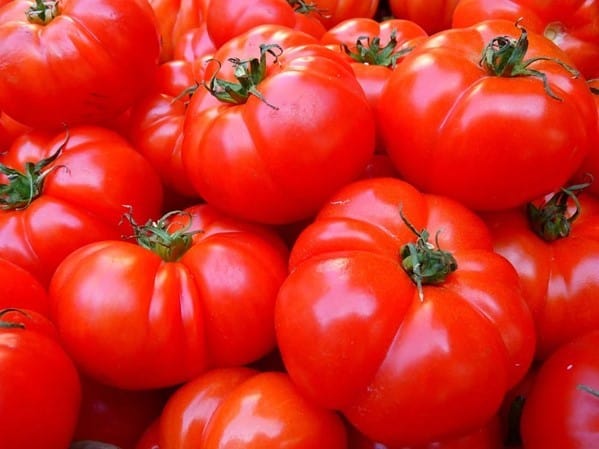
Tomatoes, like blueberries, also fall under the prestigious blanket term of superfoods. They offer a lot of very significant health benefits to consumers for affordable prices.
Vitamin C
While most fruits provide Vitamin C, tomatoes do so in very impactful quantities. A single tomato can meet nearly thirty percent of a person’s daily Vitamin C needs, and can easily do the same for your chicken coop.
Funny enough, tomatoes actually have more Vitamin C than oranges. While that’s been proven untrue, tomatoes certainly carry a sizeable serving of the vitamin.
Vitamin C is a vital component to your chicken’s growth and development, helping maintain their immune systems on top of sustaining proper cartilage and bone longevity. It serves as a potent antioxidant, which protects cells from free radical contamination – the main source of cancer.
While cancer isn’t an urgent concern for chickens, coming more from longer lives, Vitamin C comes with enough benefits to warrant it’s inclusion for their diets. More immediate perks include reduced swelling and inflammation and better wound healing.
These two are important considerations, as chickens normally fight with one another. This isn’t even considering pests that could harass your fowl – mice often make it a habit of gnawing on chicken’s feet and feathers, which could put them at prompt risk if their immune systems lack Vitamin C.
It also bolsters their iron absorption of the body. Iron helps regulate body temperature and gastrointestinal processes. Iron absorption is very tightly managed by the body, so anything improving the process will help out a lot.
Naringenin
Naringenin is a flavonoid that can be found on the skin of the tomato that greatly aids metabolic function, lowers inflammation, lowers tumor growth risk, and prevents the emergence of cardiovascular disease.
In this regard naringenin remains quite similar to Vitamin C, but more exclusive – primarily being sourced from tomato skins. It also mitigates potential oxidation stress, and helps fight off liver disease to boot.
Poultry in particular are vulnerable to liver discoloration and fatty liver. While these conditions come primarily from improper dieting, unfortunately most chickens bred and sold commercially are susceptible to such complications due to how they’re reared to meet market demands.
Chickens in this day and age are much larger than their counterparts decades ago, and possess far greater risk of fatty liver hemorrhagic syndrome. FLHS usually displays very few symptoms, and is unfortunately a very significant contributor to hen mortality.
Naringenins can help them regulate this concern, and with proper feeding and maintenance help ensure your coop can live a long, healthy, and productive life.
Vitamin B9 (Folate)
Vitamin B9 is very important to fowl, being of particular importance to maintaining tissue with high turnover rates, such as bone marrow. Poultry suffer more pronounced consequences than most other animals suffering from Vitamin B9 deficiency. Tomatoes possess a significant quantity of Folate, and can alleviate the worst of such consequences below.
Minor deficits lead to brittle feathers, stunted growth, and pallid, unhealthy complexions. This point may also end with a few mortalities among your flock. Cartilage development and tensile strength also suffers, along with very notable depigmentation.
On the topic of their yields, your coop’s eggs will suffer markedly from the deprivation. While their egg-laying capacity isn’t under the domain of Folate deficiency, the mortality rate of their young is.
Chickens suffering from lack of Vitamin B9 lay eggs with notably less hatchability than normal. The ones that do carry to term are also much more at risk of being birthed with deformations or conditions that adversely stunt their health.
Do Chickens Love Tomatoes?
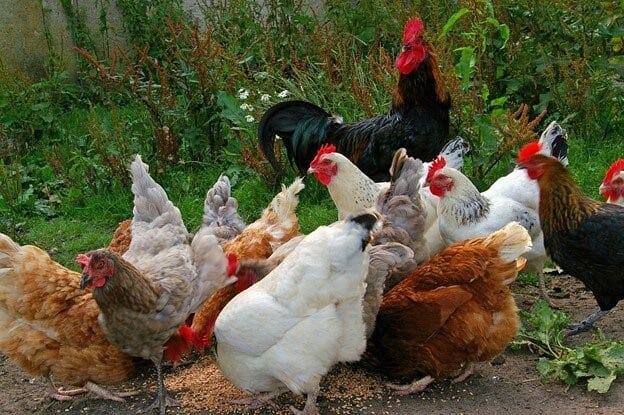
Taste preferences vary, but just like rabbits, your chickens will love tomatoes more often than not. Some might be more partial to other treats like blueberries, blackberries, or even bananas, and it might be wise to rotate their treats to avoid stagnation.
Chickens don’t know how to moderate themselves though, so ensure that tomatoes will only comprise a tenth of their diet at best. Give each chicken their own bowl, rather than serving in a communal tray – they might fight over its contents otherwise.
It’s also important not to mix their treats into their main feeder. Most common treats for chickens will rot quicker than their staple grain or mash. Attempts to incorporate it will necessitate you having to remove chunks of rotten or moldy tomato, which will take time and effort. Not removing them isn’t an option, as developing mold or rot will almost certainly render your chickens ill.
How Often Should You Give Them Tomatoes? How Much?
You can feed your chickens tomatoes around twice a week at best. While the quantity is the main factor for nutritional concerns, it’s also important not to get your chickens expecting treats like this on the regular.
Serving size usually ranges fall below to about half a tomato. Tomato size varies a lot, so a relatively safe rule of thumb for portions is about a third of the fruit. Chickens can also safely eat tomato seeds, so there’s no need to waste time separating them from the fruit’s flesh.
When feeding your chickens tomato, try to feed them early in the morning. This point of the day gives them a marked improvement in digestion, which is crucial for treats like this. Unlike other common treats, tomatoes don’t contain that much sugar – being relatively non-starchy, in fact.
The main reason to manage their tomato serving portions is more of a consumer side problem. Too much tomato in their diet will compromise yolk carotenoids and lipid peroxidation, leading to poorer tasting eggs and meat. It also drastically reduces their egg-laying capacity and potential their effective fertility.
Ripe vs Unripe Tomatoes
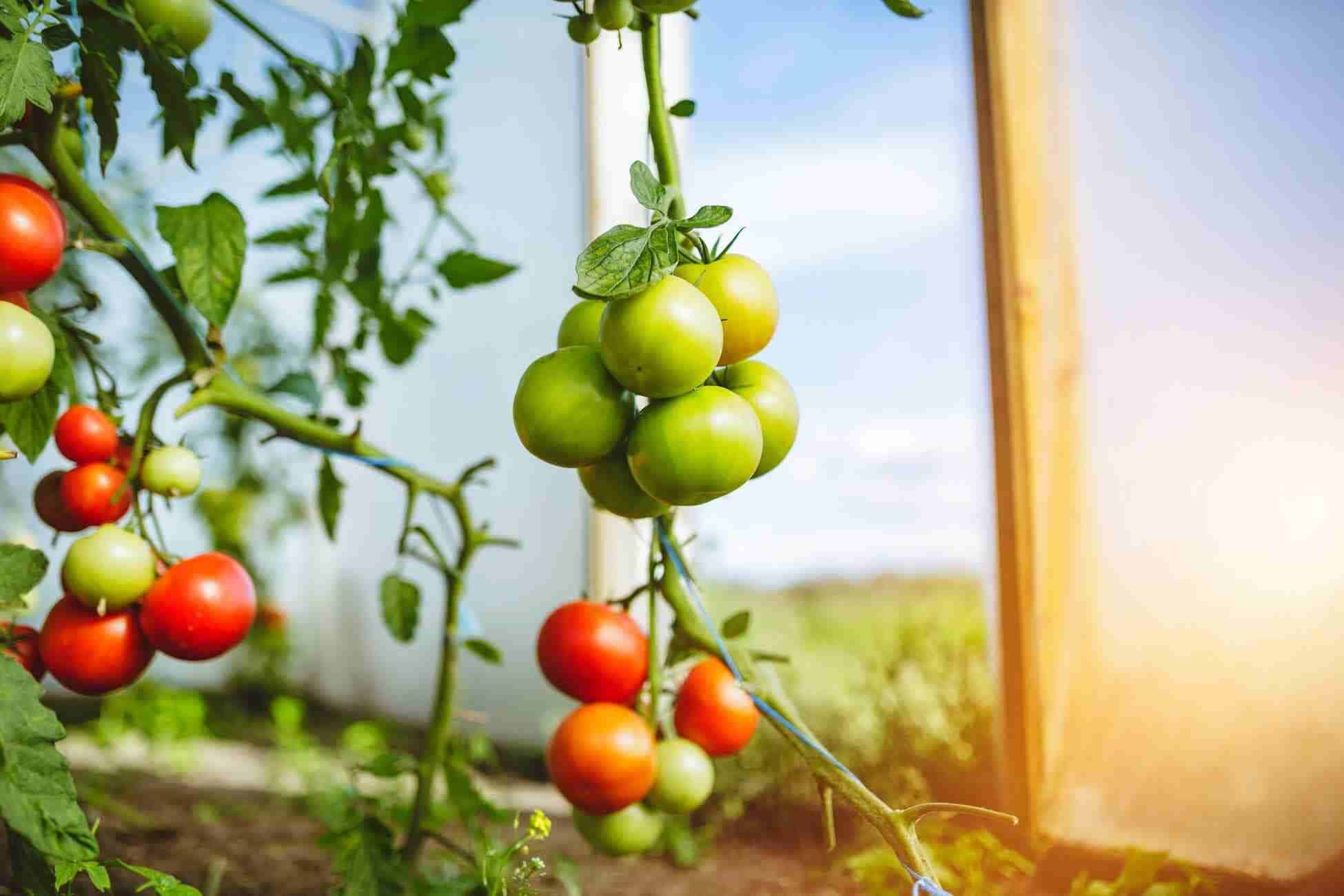
Unripe tomatoes contain a compound called solanine, which can severely harm your chickens. In extreme doses or long term exposure, it could even paralyze them. Solanine is a steroid glycoside that is fatal to smaller animals and insects, and is used by certain plants to deter animal feeding.
The presence of solanine is due to the tomato’s classification. They fall under the nightshade family – these include potatoes, chili peppers, and eggplants in their grouping.
Most members of the nightshade family aren’t suitable for poultry. The few exceptions come with very specific stages of ripening. Tomatoes and potatoes can be eaten by chickens, though the former can only be done after ripening. The latter requires not only that but thorough cooking to boot.
The younger the tomato is, the more solanine it possesses. This is often found in the green parts of the plant’s yields, and should be discarded (for potatoes) or waited on to ripen (for tomatoes). Solanine is concentrated on your tomato’s stems and leaves.
In summary, do not ever feed your chickens unripe tomatoes. Doing so is liable to cause them nausea, diarrhea, and a whole host of difficult digestive issues. Some chickens can tell it’s toxic, but there’ll undoubtedly be a couple of your flock that peck first and check never. This could lead to tragic, avoidable results, so be vigilant about screening tomato ripeness.
Storing And Preparing Tomatoes
Storage
Storing procedure for tomatoes vary depending on ripeness. Unlike berry treats, tomatoes can last on the counter without refrigeration. Tomatoes will usually keep on the counter for about a week, and double that in cooler, dedicated storage unit.
If you happen to buy them unripe, simply leave them out on the counter until their desired ripeness is achieved. A nice and simple metric is simply waiting for all the green to fade out of their skin in favor of a lush, deep red.
Preparation
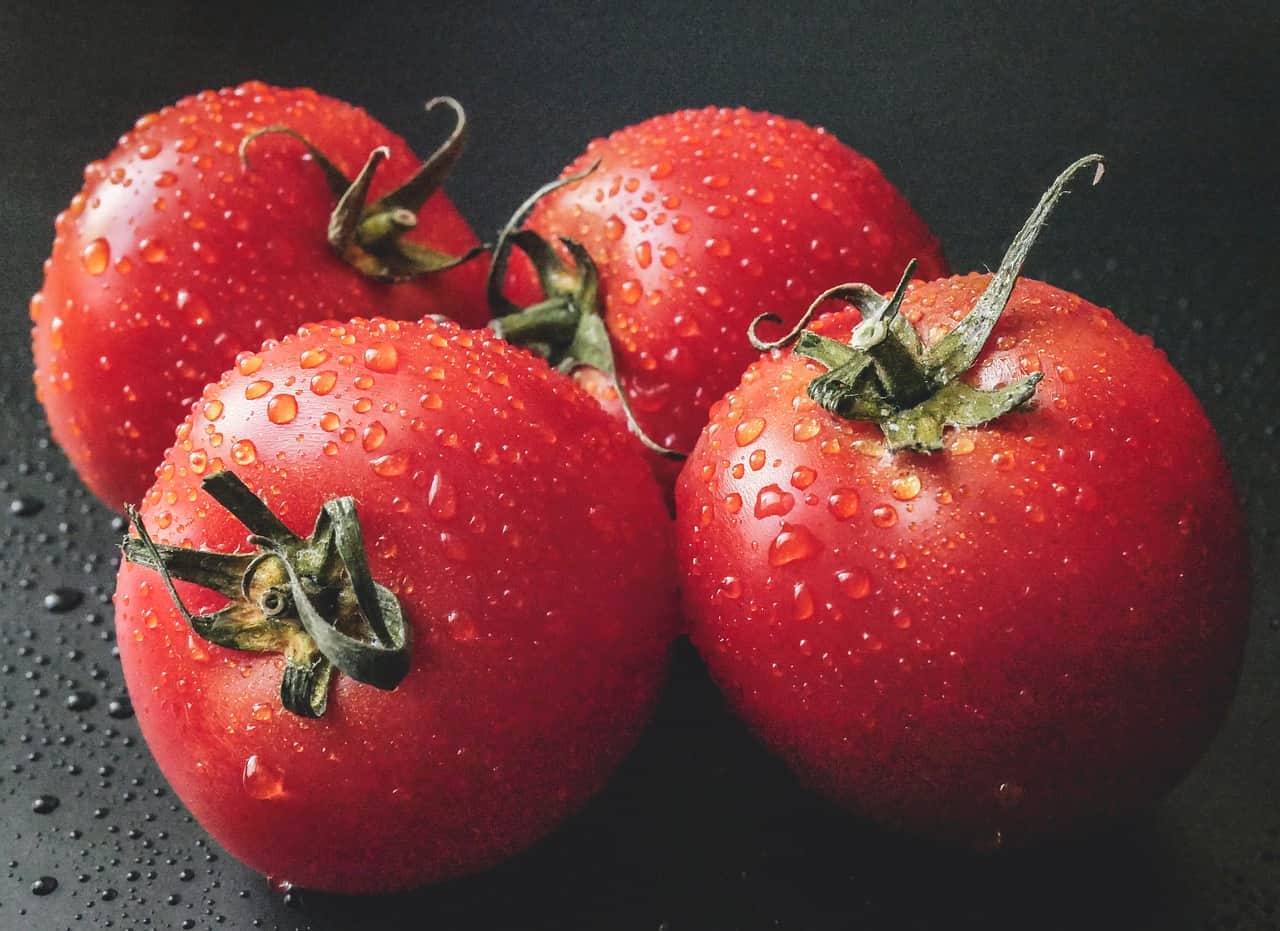
Rinse your tomatoes under warm, soapy water to deal with potential contaminants on the surface. Tomatoes are relatively firm and can handle this with little risk of pulping.
They can actually be served whole after that’s done. The only real requirement is ensuring any presence of stem or leaves from the plant are completely removed.
Another option is blanching them in hot water or an apple cider vinegar solution. This can be desirable if you’d like to serve them sliced tomatoes, as the blanching processes makes removing the peels much easier.
If you choose to use apple cider vinegar, make sure to only use a proportion of about one tablespoon to a gallon of water. Fortunately, this mix is commonly used to fortify your chicken coops’ waterer. Simply set aside a small portion of the solution for boiling or blanching purposes.
Bear in mind that neither boiling nor blanching can get rid of solanine content in plants. An unorthodox way to handle that can be found via frying, though your mileage may vary on practicality and effectiveness. Frying to remove solanine is often done in restaurants catered to human palates, so trying to modify the effort for your flock will take some careful consideration.
Health Risks
As members of the nightshade family, tomatoes are feared to contain lectins – a protein often referred to as an “antinutrient”. They can bind to walls of your stomach and intestine, leading to abdominal pain and vomiting.
While there isn’t evidence that specifically flags lectin as a danger for human consumption, the same security can’t be guaranteed for your feathered flock. As smaller animals, they’re even more at risk of these dangers.
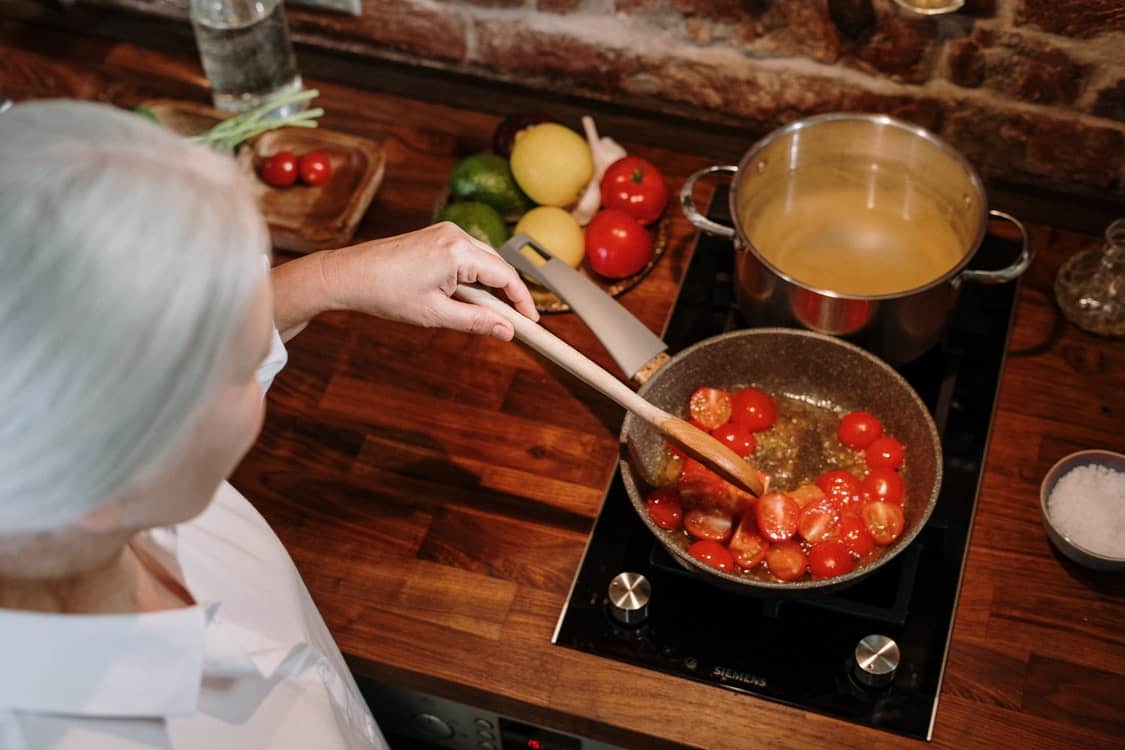
Thankfully, lectins get destroyed in the cooking process. If you’re willing to boil or fry your tomatoes lectins shouldn’t be more than a buzzword not worth concerning yourself with.
As with most treats, the usual mold and rot concerns come into play. Always ensure the tomatoes you give are eaten or disposed of before either of these set in. Not all chickens will know the difference, and some simply have appetites and curiosities too voracious to care about health.
This isn’t even getting into potential pests they’d attract. Thankfully, tomatoes don’t have nearly the same sugar content as other treats, and are less likely to draw in mice and insects.
It’s still very important to clean up thoroughly after their feeding periods – make sure to do so at least once every night.
Do not feed them too many tomatoes, as their eggs and meat will suffer for it. Do not feed them unripe tomatoes, as the solanine content will make them very unwell over time. Finally, steer clear of giving them any leaves – they simply can’t be eaten by them, no matter how thoroughly you wash, boil, or even fry them.
Final Thoughts
Tomatoes make for great chicken treats, and can help round out nutritional needs their feeds can’t meet. Only serve them the ripe fruits, and only after you’ve removed any trace of stem or leaf. Once that’s done, let them go wild and enjoy their juicy tomatoes.

